Review for Dance in the Vampire Bund
Introduction
A point of silliness… 'Bund' is a rude word in Panjabi. So not only am I giggling every time I read the title of this show, I'm also pronouncing it incorrectly, in an Indian accent. God help me if I ever have to speak about the show in polite company. Typing is okay, I can get away with typing, and also Dance in the Vampire Bund isn't the sort of show that that you regale the moral descendants of Mary Whitehouse with. It's a vampire show most obviously, and you have to wonder if the anime world actually needs another vampire show. It's another vampire show from Studio SHAFT, with a young prepubescent female vampiric main character. So naturally I'm going to be comparing it to Moon Phase. But first things first, let's ride that mammoth out of the room. Prepubescent female nudity, potentially with sexual overtones has cleared the hurdle of the BBFC with just a 15 rating. Of course context and story have a big part to play in this. When your main character may look like a child, but is actually an immortal and ageless vampire, there are certain story ideas that become less anathema. Lest we forget, this isn't exactly new territory for UK anime, as Le Portrait de Petite Cossette has similar subject matter.
It's already had a rocky road on its US release, with the initial Internet streams censored, and when the possibility of the DVDs being similarly obscured was raised, the fan outcry had Funimation actually issuing a statement to the contrary. Those DVDs now come to the UK, although as usual they do so via Australia's Madman Entertainment. And if they can get past Australia's notoriously touchy censorship, maybe all this loli-vampire brouhaha is just a storm in a teacup. Still, with anime always an easy target for the tabloid hacks, and the papers currently lacking in suitable moral outrage stories, is it the best time to hang a bull's-eye around the throat of the industry? If you're going to risk the ire of Middle England, Dance in the Vampire Bund is going to have to be very good, High School of the Dead good.
Mina Tepes is a vampire. Actually she's vampire royalty, heir to the legacy of the notorious Vlad Tepes himself, and all of vampire society ostensibly swears allegiance to her, obey her through instinct alone. That's not the sort of thing you'd expect anyone to advertise. Mina's just gone and announced it on live TV, confirming the existence of vampires to a stunned world. Mina has a dream. She's the Martin Luther King of vampires, and with their extensive, and long accumulated finances, she's just bought an island annex off the coast of Japan, where she aims to set up an independent vampire state to coexist with humans, where both societies can prosper and grow equally. All she has to do is to convince the government of Japan to deed her people the rights to that land in perpetuity.
And as usual, such people with dreams become the targets of those who would much rather preserve the status quo, both among the vampires and the humans. Mina needs a bodyguard. A young high school student called Akira Kaburagi is that bodyguard, only he doesn't know it. When he was a child, he promised Mina that he would protect her and always be by her side; only he doesn't know it. Akira Kaburagi is also a werewolf, only he doesn't know it. One year previously, he was in an accident that resulted in a head injury, and 16 years of his life vanished in an instant. It's only the return of Mina Tepes into his life that begins to jog those memories. Now Mina is attending his school, is sitting next to him in class, and causing all sorts of uproar and scandal among the students. As the conspiracies, intrigue and plots deepen around Mina Tepes, Akira has to play catch-up if he is to fulfil his oath to protect her. He may not have the skills, and he doesn't have the memories, but at the very least he can rub anti-sun gel on her naked body.
Manga Entertainment present twelve episodes of Dance in the Vampire Bund across 2 discs.
Disc 1
1. Prom Night
2. Howling
3. Teen Wolf
4. Interview with the Vampire
5. Shadow of the Vampire
6. From Dusk Till Dawn
Disc 2
7. Innocent Blood
8. Near Dark
9. The Lost Boys
10. Walpurgis Night
11. Underworld
12. Dance in the Vampire Bund
Picture
Dance in the Vampire Bund gets a 1.78:1 anamorphic transfer, which as is the way of most anime being released in the UK today, is a native PAL image, with the 4% speedup that implies. It means that Dance in the Vampire Bund looks clean, sharp, and free of any of those old NTSC-PAL conversion issues. The only complaint you may have is that of the very slight aliasing that you see at the limits of the DVD format. The transfer is more than welcome, as it is Studio SHAFT doing the animation here. If you want an animation company that knows how to use the medium to eye-catching effect, it's SHAFT, and once again with this show, they throw their entire arsenal of tricks at the screen. Different animation styles, visual effects, camera angles, lens flare, moody lighting, gothic direction, and of course the controversial fan service, they know exactly how to give a show style. Don't let the more comical and static first episode fool you, Dance in the Vampire Bund is a veritable visual feast, surpassing previous shows of theirs like Negima!? and Moon Phase. I did notice a smidge of cross colouration when the show was scaled up to an HD screen, but it was selective, and maybe a creative choice.
Sound
As is par for the course for modern anime DVDs, we have the option of DD 5.1 Surround English, and DD 2.0 Stereo Japanese, with translated subtitles and a signs only track. I was happy as a lamb with the original language track, the stereo used to decent effect, especially when prologicked up. For fans of the English dub, my brief experience of it didn't throw up any howlers. No cheesy Transylvanian accents thankfully, but the dialogue was clear, and the 5.1 audio gave the show a little more room to breathe. The incidental music is forgettable, but works invisibly to drive the story, while the theme songs are more memorable and induce a little toe tapping.
Extras
It's the usual static menu and jacket picture presentation for the show, while each episode ends with a Dance With the Vampire Maids comedy skit/episode preview.
The extras are all on disc 2, including 1-minute worth of the Original Commercials, a 90-second promo video, and the textless credits (no textless credits for those episodes where the story runs over into the credit sequences though).
The big extra here is the Intermission 1-12. This is a 16-minute manga art slideshow with voiceover from the actors. As you can tell, there are 12 intermissions here, all little moments of plot and drama that aren't in the show itself, but fill up little gaps in the story. They are quite interesting to watch, although they are only available in Japanese with English subtitles.
Conclusion
I wasn't expecting much from Dance in the Vampire Bund. I find SHAFT productions to be a little hit and miss, erring more on the side of miss. They're prone to using their arsenal of quirky animation techniques to mask stories thin to the point of anorexic, and the actual charm of the animation can quickly wear off. I find that it's best suited to a sketch show, short gag format, which works really well in shows like Negima!? or Pani Poni Dash, but not so strongly in ongoing storylines like Moon Phase, although my favourite SHAFT animation is the ongoing Natsu no Arashi. I figured that Dance in the Vampire Bund would be much the same as Moon Phase. Yet for the first half of the show, the first six episodes, Dance in the Vampire Bund couldn't even meet my low expectations.
Perhaps it's because it has the same initial premise as another, rather dismal show that started streaming to the UK recently, A Dark Rabbit Has Seven Lives. Both shows feature female vampire characters that come back into the lives of the show's male high school student protagonists, protagonists who look normal on the outside, but hide a secret identity beneath a layer of amnesia. Of course A Dark Rabbit looks a lot cheaper, and is a lot more middle of the road in terms of content and story. But the similarity did initially put me off. The high school angst storyline, the touchy subject of a potential romance between grown up Akira and ageless vampire in a little girl's body Mina was overplayed, especially at first, and the show seemed to revel in pushing its imagined boundaries, and seeking to provoke faux offence. There really is nothing at all to raise Middle England's blood pressure, beyond some nudity.
The first episode sets the premise up, introducing us to a world where vampires have just made their presence felt, and are seeking to live in co-existence with humans, the fact that there's some complex social structure to vampire society, and that not everyone agrees with Princess Mina's aims. It's all done using the odd device of a TV chat show. The story itself commences in the second episode, where Mina is reunited with her childhood protector Akira, and has to reawaken his memories of who he truly is. For a normal high school student to find out that he is a werewolf sworn to protect his vampire master isn't exactly easy. For a Catholic School to find out that the Princess of the Vampires is actually its chairwoman and founder causes even more friction. So for the next five episodes, we have teen angst at high school, fear and suspicion of vampires, jealousy and rivalry among Akira's potential love interests, a little comedy, a lot of drama, and a whole lot of politicking going on in the background as Mina tries to establish her offshore vampire haven. It all comes to a head in the high school where the various factions collide, trying to decide the fate of both societies, using the school students as pawns. And I found all of this as dull as dishwater.
Then I put the second disc in, and it was a revelation. The high school segment was over, Akira was well on his way to recovering his memories, and was now Mina's full time protector. The Bund had been established, and the show started looking into how this fledgling vampire empire was integrating with human society, and a whole lot of politics, factions, and manoeuvring came to the forefront. The show suddenly became interesting, and it even dialled back the more blatant attempts to shock, and instead actually introduced a story element that was edgy and flirted with taboo. As much as I found the first half of Dance With the Vampire Bund deflating, the second half was even more interesting, the characters were developed and more rounded, and the back-story really fed into what happened on screen. SHAFT's flashy visuals were less a distraction from the vapidity of the first half, and more an enhancement to the depth and complexity of the second. It really was like watching two different shows.
From the faux taboo of the ageless vampire in a little girl's body (these vampires transform when powered up into creatures or hybrids, Mina's transformation is into a busty older woman dressed like someone out of the Witchblade anime), we go to a story that is genuinely edgy. One of the vocal critics of vampires in the first half was student chairman Shinonome. In an ironic twist she gets turned into a vampire in the story, which as well as increasing her desire for blood, heightens her other desires as well. In this case it was a crush that she nurses on her 13-year-old next-door neighbour. The way that the story resolves this issue may not appeal to everyone's sensibilities, even if it is done mostly through implication rather than explicitly.
The concept of a group called Telomere that opposes Mina's plans is raised early on, and the way the story develops, with a rather terrifying terrorism subplot is again very compelling. The conclusion of the show brings into focus the true structure of vampire society, and Mina's place in it as Princess. It's a trial that tests both her and Akira and their bonds, and it makes for a powerful climax to the show.
If you're going to have a show of two halves when it comes to quality and appeal, it best for them to be like Dance In The Vampire Bund, as while it takes its time in getting going, with a clichéd and dispiriting first half, it really delivers in the second half with an emotionally engaging conclusion that leaves you hoping for more. Hopefully when it comes to re-watching it, the first half will gain more resonance once you know what it leads up to.
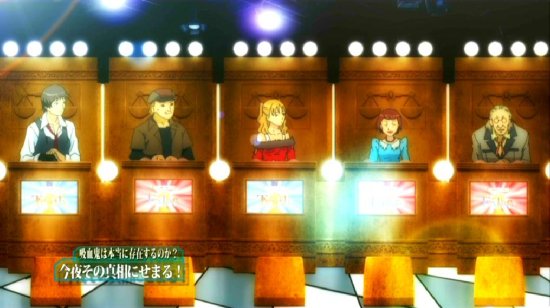

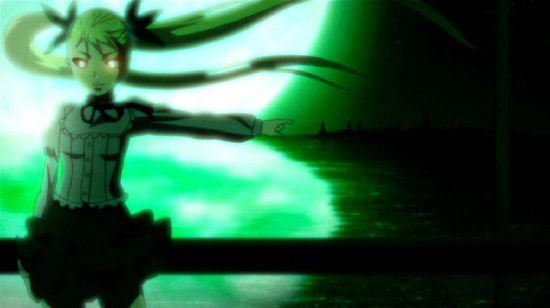
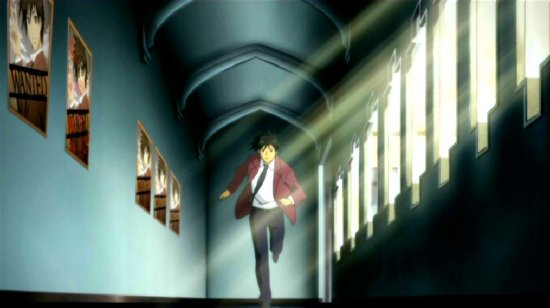
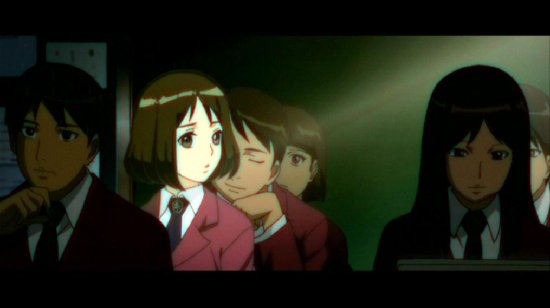
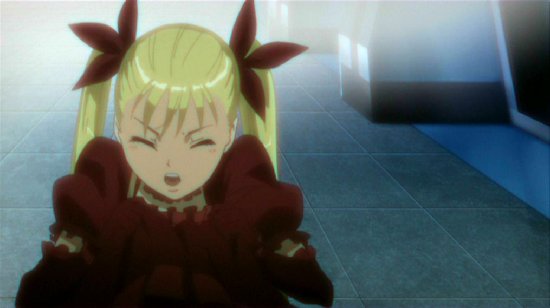

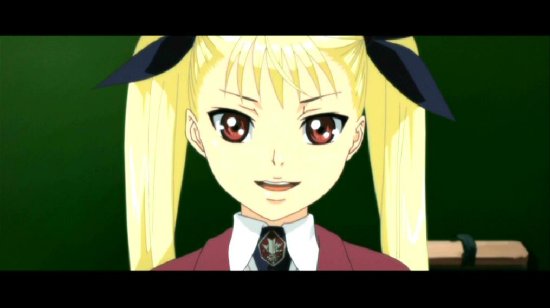
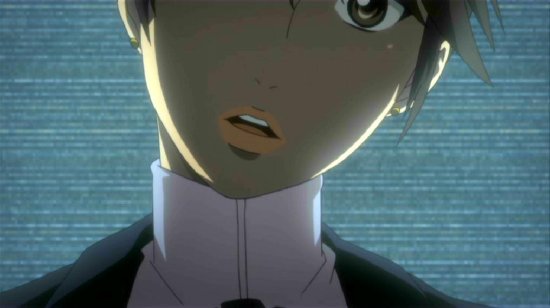
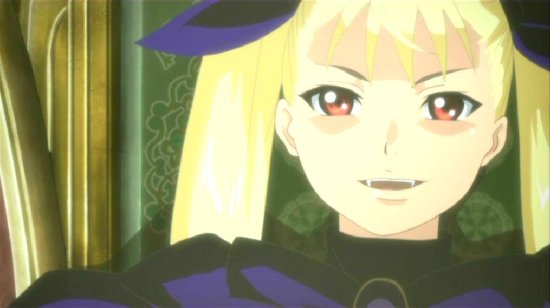
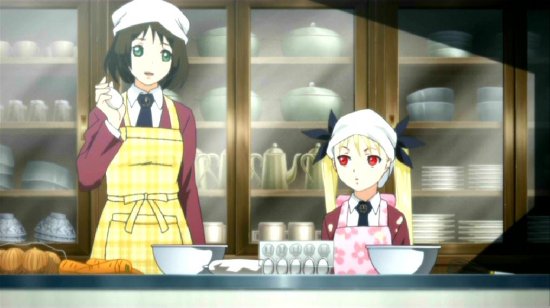
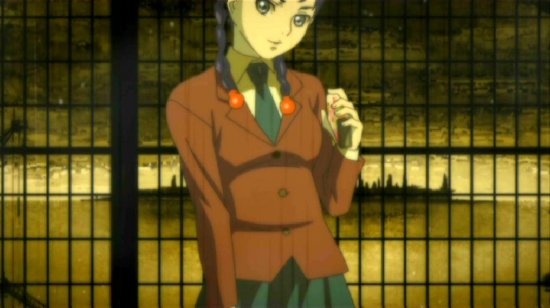
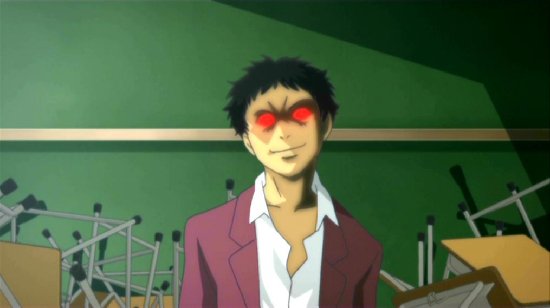
Your Opinions and Comments
Be the first to post a comment!